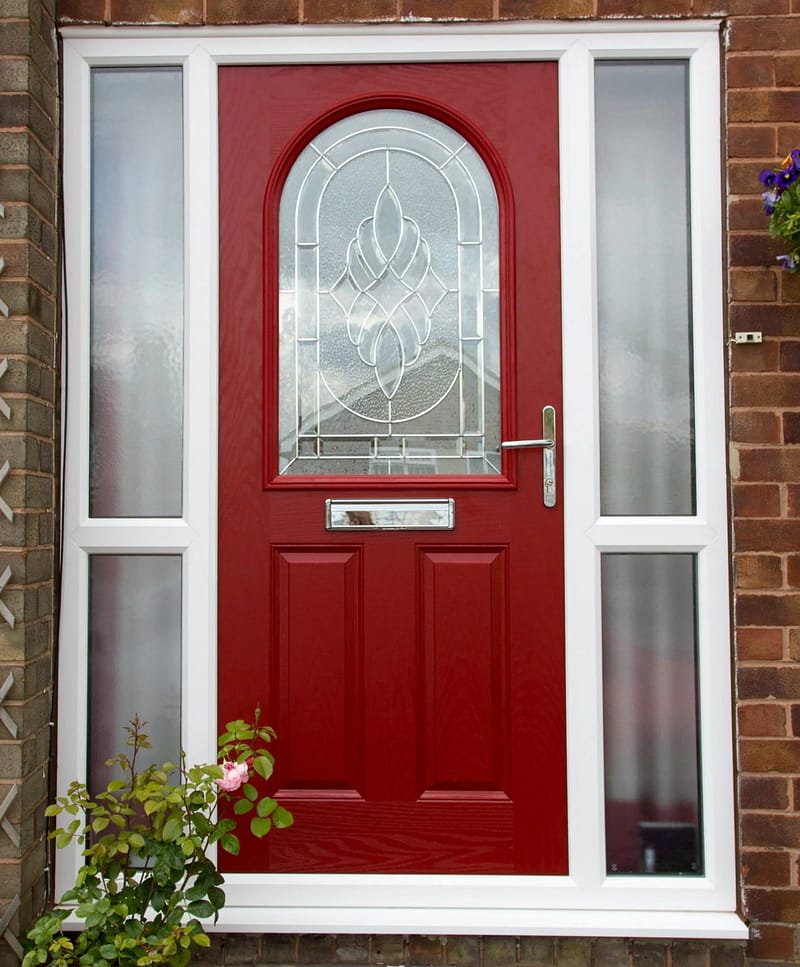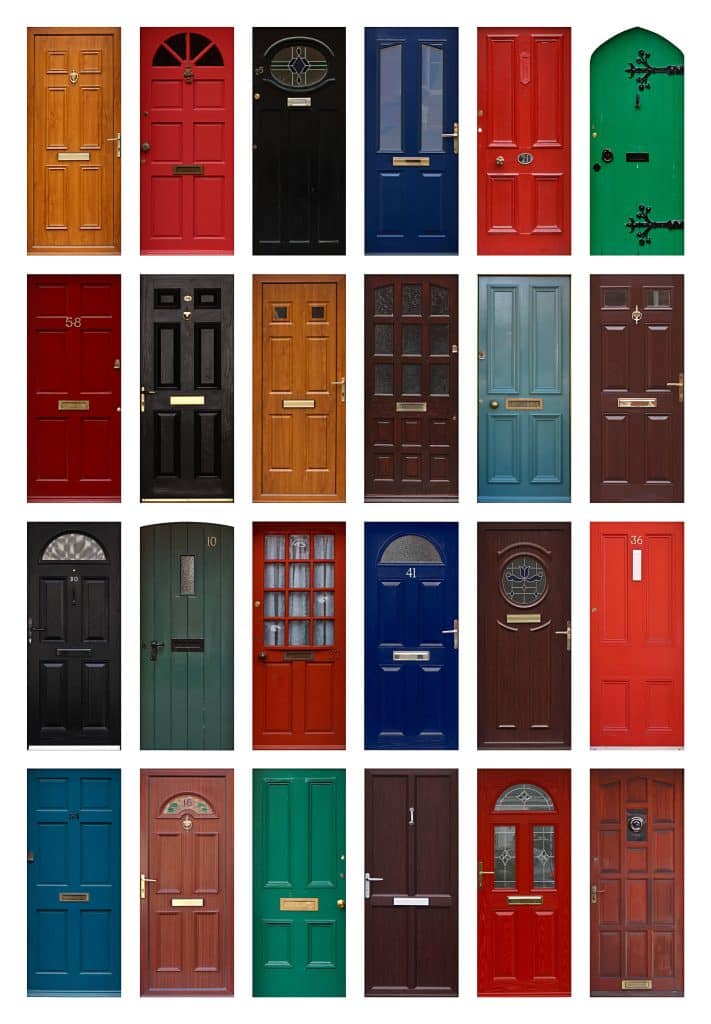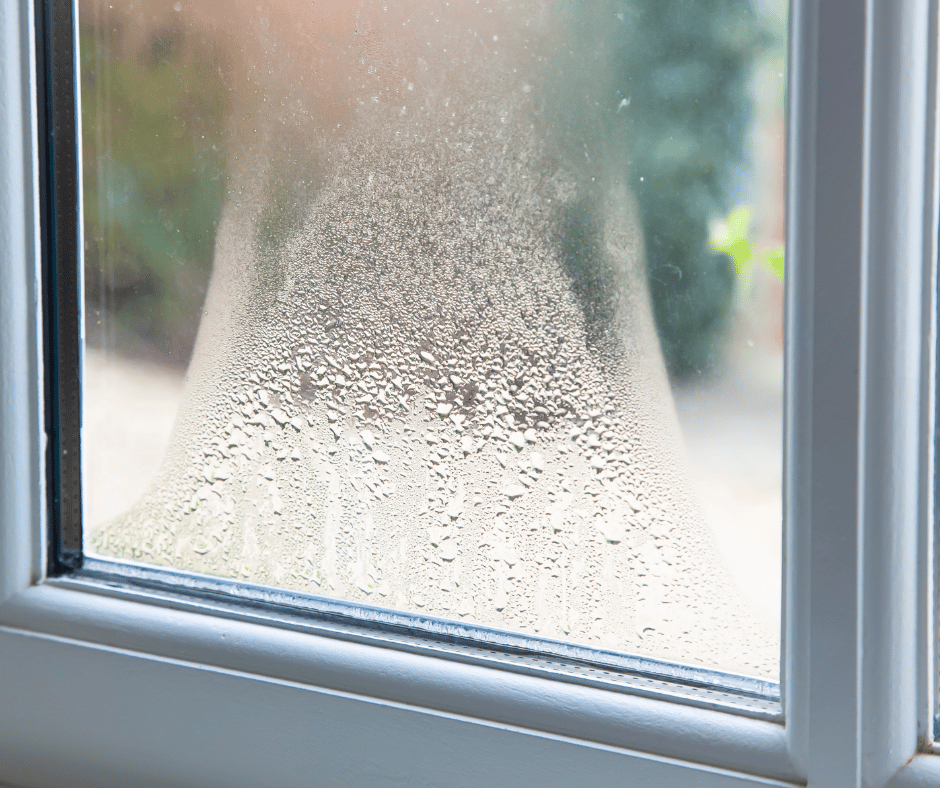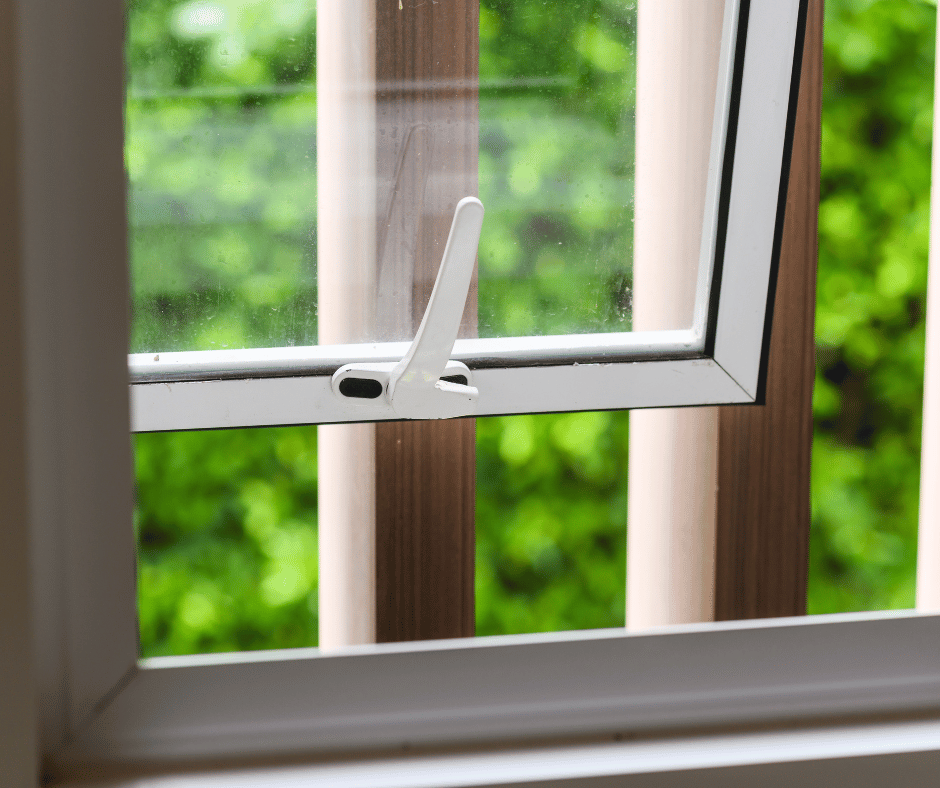Insulating your front door is one of the best ways to keep your house warm, and your heating bills low. It’s important to do it properly if you want your home to be warm in winter and cool in summer.
But not all front door insulation is created equally. You need to use the right materials, make sure the gaps are sealed properly, and follow up with further internal and external insulating methods. But more on that across the rest of our blog!
By starting with the front door, energy efficiency doesn’t have to be expensive, nor does it need to be unattainable for the modern household. If you start with the front door, your efforts will very easily snowball from there.
After all, you can then move into window and wall insulation; the more you know about insulating materials now, the more control you’ll have over the temperature in your home. This means lower bills, more consistent temperatures, and plenty of peace of mind.
What homeowner wouldn’t want this level of customisation over how comfortable their home can be? So with all that in mind, here’s our comprehensive guide on insulating your front door.
Choosing the Right Insulation Materials
When it comes to insulating your front door for optimal energy efficiency, selecting the right materials is crucial. Doors come in various materials, with wood, metal, and uPVC being among the most common options. Each material has its own set of characteristics that can impact insulation effectiveness and overall performance.
Wooden doors offer a classic and timeless aesthetic appeal, but they may require more maintenance to ensure longevity and insulation efficiency. While wood naturally provides some insulation, it’s essential to choose a door with proper insulation features or consider adding insulation yourself.
Metal doors, such as those made of steel or aluminium, are durable and offer excellent security. However, metal conducts heat and cold more readily than other materials, potentially leading to energy loss if not properly insulated. Look for metal doors with thermal breaks or consider adding insulation to improve their energy efficiency.
uPVC (unplasticised polyvinyl chloride) doors have become increasingly popular due to their durability, low maintenance requirements, and excellent insulation properties. uPVC is a naturally insulating material that can help reduce heat transfer, keeping your home comfortable year-round. Additionally, uPVC doors often come with built-in insulation features, further enhancing their energy efficiency.
When choosing the right insulation materials for your front door, consider the climate of your region, your budget, and the specific energy efficiency needs of your home. Additionally, be sure to select materials that complement the aesthetics of your property while providing the necessary level of insulation to maximise energy savings.
Liquid Foam Insulation
Liquid foam insulation is a prevalent choice for filling door gaps. Its liquid form allows it to flow into tight spaces and hard-to-reach areas, effectively sealing off any air leaks. However, it’s essential to note that this material is best suited for filling cavities rather than providing structural support. Therefore, it’s most suitable for insulating door frames and the surrounding structure to prevent heat loss and drafts.
Fibreglass
Fibreglass is another popular insulation material commonly used to reinforce doors with a protective layer. Unlike liquid foam, fibreglass provides a solid barrier against heat transfer and can help improve the overall energy efficiency of your home. Its durability ensures a long lifespan, making it a cost-effective choice for homeowners.
In the UK, fibreglass insulation is increasingly favoured for its effectiveness and longevity. With the country experiencing rising summer temperatures due to climate change, it’s essential to choose insulation materials that can withstand extreme conditions without compromising performance. Fibreglass insulation offers stability and reliability, even in mild climates, providing peace of mind for homeowners seeking to enhance their home’s energy efficiency and comfort levels.
Composite material
A composite door is a door made out of uPVC, wood, and laminate. Combining three types of materials keeps all weather conditions out. A composite door is also denser, making it harder and longer lasting. It certainly won’t get damaged during a typical UK storm!
At Celestial, we would always recommend a composite door to those looking for long term heating efficiency, and peace of mind when it comes to security in their home. If you want to know more about why, check out our post “What is a composite door”.

DIY methods
Homeowners can also invest in their weatherproofing strips to apply themselves. These can be applied in the seal area of the door to ensure any gaps have been plugged. While this is a handy, quick-solving solution, improper application is common. There’s also the issue of a larger problem being at play, such as your property not being energy efficient in the first place.Budget-Friendly Options
When considering how to insulate your front door, it’s essential to take your budget into account. Some materials are more affordable than others, and your budget will undoubtedly influence the best insulation choice for you. If you’re looking for cost-effective options, there are several affordable materials to consider:- Weather Stripping: Weather stripping is a simple and inexpensive solution for sealing gaps around your door frame. It helps prevent drafts and heat loss without breaking the bank.
- Foam Tape: Foam tape is another budget-friendly option that can be used to seal gaps and cracks around your door. It’s easy to install and provides a good barrier against air infiltration.
- Draft Excluders: Draft excluders, also known as door snakes or draft stoppers, are affordable and effective at blocking cold air from entering your home. They can be placed along the bottom of the door to prevent drafts and improve insulation.
While these materials may not offer the same level of insulation as more expensive options, they can still make a significant difference in improving energy efficiency and comfort levels in your home.
Other things consider
You should also take your budget into account here. Some materials are going to be much more affordable than others and that will definitely inform the best insulation for you. Similarly, you’ll need to take the age of your door into account. If you’re wondering how to insulate an old front door and whether the materials need to be different, it’s worth thinking about getting the door replaced. Modern doors made out of fibreglass or composite material are best for keeping the weather out and the warm in. Older doors tend to be wooden and very draughty, which can be difficult to weatherproof via DIY methods.
Step-by-Step Guide to Insulating Your Front Door
DIY is the first port of call when you want to focus on energy efficiency in the home.
Here’s how to insulate a front door from the ground up:
Make sure it’s hung tightly
You can do this very easily by checking on the screws and making sure they’ve been tightened to a point where they won’t move any further.
However, try not to strip the head in your quest to make the doorway more energy-efficient!
Replace the seal
Reckon your door isn’t insulated properly? Scraping off the old seal is the best course of action. Once you’ve done so, you can replace it with a new seal. Buy a sealing gun and its contents and then push the nozzle into the places where the old seal has been worn off.
Use a draught excluder
A draught excluder can be bought from any major home store and used from the moment you bring it home. A temporary measure, it can nonetheless prevent draughts from getting any further than the gap under the door.
However, one of the main issues with using a draught excluder against the front door is wet weather. If rain tends to come in under the door, not only will it let the chill in, but the excluder itself is likely to become very wet, mouldy, and even start to rot.
If using one of these during the wetter months in the UK, be sure to wash and dry it once a week.
Hang a curtain
Curtains are good for adding a layer of warmth to any portal to the outside world. If you’ve already got them hung up over the windows, hang a set over the door as well.
Not only does this allow for more privacy if you have a glass door or a centre-positioned glass pane – it can boost energy efficiency by acting as a cloth barrier between anything outside and everything inside.
Blackout curtains are good for the summer months specifically.
Invest in a new front door
If you’ve tried all of the above and still notice draughts coming from the front door, then it may be time to bite the bullet and consider investing in a new front door for your home.
Investing in a new front door provides not just comfort, not just security, but a promise towards energy efficiency as well. If you buy a new, properly insulated door and have it fitted by a professional expert, you can be sure that draught will bother you no more.
At Celestial Windows, we offer a wide range of doors from standard UPVC doors to Composite doors. We have over 30 colours to choose from and styles ranging from traditional to contemporary.
Not only are we certain we can find a style and colour to suit your home and personal taste, everything we install is covered by a 10 year insurance backed guarantee via FENSA. All of our doors are fitted with a high security locking system, hinges and ancillaries.
Whilst all of the doors we install offer good energy efficiency and insulation, the composite doors are superior to the UPVC doors as they are a thicker door composed of reinforced steel and either foam or timber, then coated in UPVC for durability. Whilst the UPVC doors are also steel reinforced, they are fully composed of UPVC. The timber or foam filled inner core of the composite doors adds an extra protection from heat loss.
Common Mistakes to Avoid in Door Insulation
The most common mistake people make when trying to insulate a door is to not fit enough insulation. Far from the best way to insulate a front door, if you don’t use enough expanding foam or fibreglass based material, the air is still going to break through in either direction.
Another common mistake is to only utilise DIY methods. These may save time and money in the short run, but in the long term things can turn out costly. Sure, you can plug a few air gaps with a new bit of weatherproofing, but a lot of the time the door will need to be replaced.
Following along from this, it’s also quite time-consuming to go over the door and frame to ensure they’re structurally sound. Even the tiniest of holes, which can be easy to miss with the untrained eye, can change the temperature by around 3 to 4 degrees. This can be killer in both summer and winter.
Benefits of Insulating Your Front Door
You’ll save money on your bills
We’ve mentioned this a few times already, but it really is the best thing about insulating the front door of your home! If a front door is made with energy efficiency in mind, the average homeowner can reduce the cost of their total energy bill by 15%.
In the current economic climate, that’s going to save you a lot of money!
This is most obvious during winter time when you need to put the heating on every single day. If you’re losing less heat through gaps from a poorly insulated front door, you won’t be running your central heating anywhere near as long. Less time spent on, less money spent overall.
The summer won’t be as hot
Do you find it hard to stay indoors when the sun is beaming down? With an energy-efficient, properly insulated front door, your home will stay a lot cooler when you need it to.
You can pump cool air in overnight by opening the windows, closing them when the sun rises, and then trap that cool air inside all day long. It won’t leak out through the front door as there will be nowhere for it to leak from!
This also means that a portable AC unit won’t need to be operated for long periods of time either.
Your house will have a lower carbon footprint
The household carbon footprint is sourced from the amount of emissions generated each year. If you’re using the heating less, and the heat isn’t slipping straight out of a crack, your footprint will become smaller steadily over time.
If you want to know your home’s current emission content, you can check your footprint with the help of an online tool.

Top Tips for Maintaining Insulation Efficiency
If you want your home to be more energy efficient, It’s not just the front door you should think about. You can insulate across the house, and keep that insulation working efficiently, with these 4 tips:
Insulate the attic
Around 25% of a home’s heat is lost through the roof. Insulate this area properly to keep the insulation system around your home working as a cohesive unit.
Keep the thermostat at a regular level
If the thermostat stays at the same level all year round, your insulation isn’t going to have to work double time to keep up. Put it down to a comfortable level – we recommend around 20 to 22 degrees – and don’t move it again.
Routinely check on the door seal
Once you’ve insulated the front door, check it every 6 months to see if new gaps or draughts have appeared.
Frequently Asked Questions about Front Door Insulation
We’ve compiled some of the most commonly asked questions we get here at Celestial to help you with insulating your front door.
How can I insulate my front door?
Try a few DIY methods like we mentioned above first, but also think about replacing the door with a composite variant.
How to insulate an exterior?
To insulate an exterior door, you can use a variety of the methods we have discussed above, such as installing weather stripping, applying foam tape, or adding draft excluders.
These materials help seal gaps and prevent drafts, improving energy efficiency and comfort levels in your home. Additionally, consider replacing old doors with modern fibreglass or composite options for better insulation and weather resistance.
How long does front door insulation last?
Typically, any kind of insulation can last for around 20 years.
Why Composite Doors are the Best Option
We strongly believe that composite doors offer the best form of insulation for your home when it comes to a front doors option. You may pay more up front, but see this as an investment, as you will save on heating bills in the long run.
Composite doors are made of multiple materials, meaning your home gets the best of all worlds.
Composite doors are also made to be more robust, meaning they last longer than wooden or metal doors; the latter is also prone to being dented and scratched.
Composite doors can then be designed in a variety of ways, meaning you’re likely to find a version that fits your home’s aesthetic.
Summary
Energy efficiency starts with the front door! If you’re sick of spending silly amounts of money on heating, or struggle to heat your home efficiently, we would recommend applying the above steps to insulate your front door effectively. If you’re still not satisfied, you can always opt to get a new front door.
At Celestial, we are committed to ensure our customers are fully informed of their options and we can always try and work within their price range, whether that be a standard UPVC door or a high end composite door. Everything we install is fully steel reinforced and has a high security 10 point locking system and is covered by FENSA.
This means whatever your taste, style or budget, we know we can provide you with a front door that ensures draught is no longer a problem. Draught is also covered under our 10 year insurance backed guarantee so if you ever did experience this with one of our installations, our team would attend free of charge within a few days and fully survey the issue and fix the problem.




